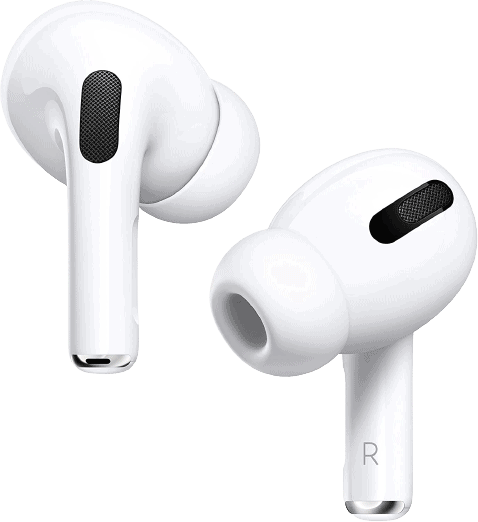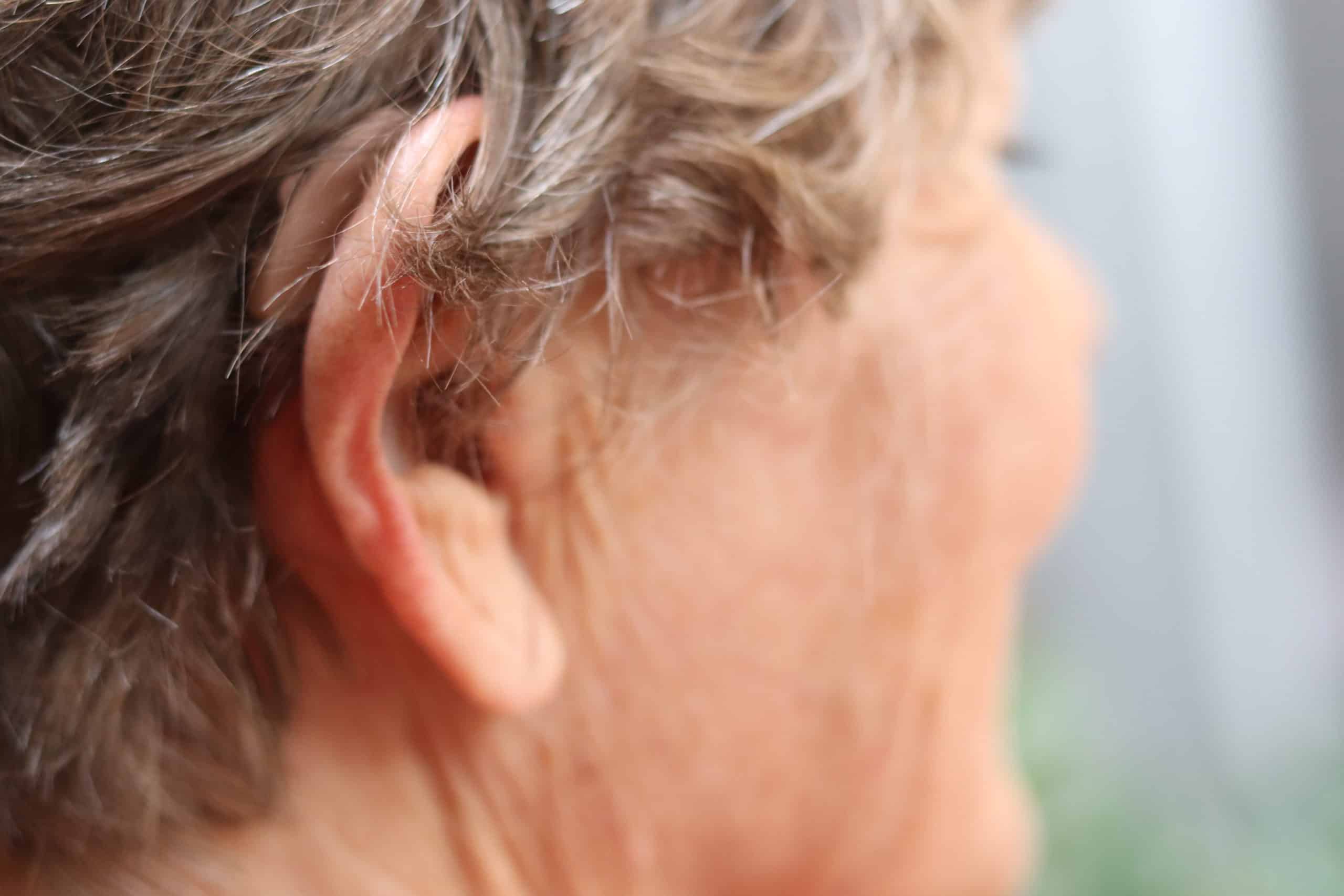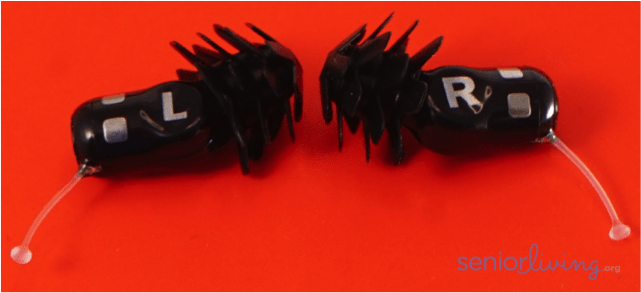How to Pair Hearing Aids to an iPhone
Increase sound quality for calls and music by connecting your hearing aids to your smartphone.
SeniorLiving.org is supported by commissions from providers listed on our site. Read our Editorial Guidelines
The classic question “Can you hear me now?” takes on a whole meaning. Luckily, with nearly 80 percent1 of older adults now using smartphones, new hearing aids are designed to take advantage of the computer in your pocket by pairing them with your phone.
Connecting your hearing aid to your iPhone improves sound quality by routing calls, videos, and music directly to your hearing aid. It also allows you to make hearing aid adjustments more easily using your phone. But how exactly do you pair your hearing aids to an iPhone?
If you have compatible hearing aids, we’ll show you step-by-step how to pair, control, and troubleshoot using your iPhone.
Pro Tip: Don’t have hearing aids that are compatible with your iPhone? Check out our list of the best hearing aids for iPhone users. You’ll be surprised by the senior-friendly features and tech.
Are My Hearing Aids Compatible with My iPhone?
First, be sure to check whether your hearing aid is compatible with an iPhone. Most popular Bluetooth-enabled hearing aids will pair with an iPhone, but not all allow for a direct connection. Apple works with top hearing aid manufacturers to create what they call “Made for iPhone” or MFi hearing aids. There are many options from over forty manufacturers, including Jabra Enhance, Signia, and Beltone. You can find a list of compatible hearing aids on Apple’s website.3
To use Made for iPhone devices, you’ll need to have an iPhone 5 or later. You can also use any of these other Apple products:
- iPad Pro
- iPad Air
- iPad (4th generation or later)
- iPad Mini
- iPod Touch (4th generation or later)
How to Pair Hearing Aids to an iPhone
To pair your hearing aid to your iPhone, you’ll need to do the following:
Step 1: Tap the “Settings” icon on your iPhone’s home screen.
The iPhone Settings icon
Step 2: In your settings, tap the category called “Bluetooth.” Turn on Bluetooth by clicking the slider button that appears. You’ll know it’s on when it turns green.
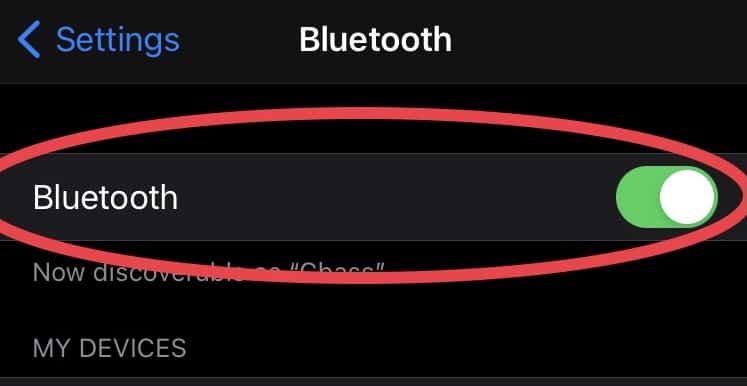
Turn on Bluetooth
Step 3: Open the battery doors on your hearing aid.
Step 4: On your phone, go to “Settings” again. Tap the “Accessibility” icon.
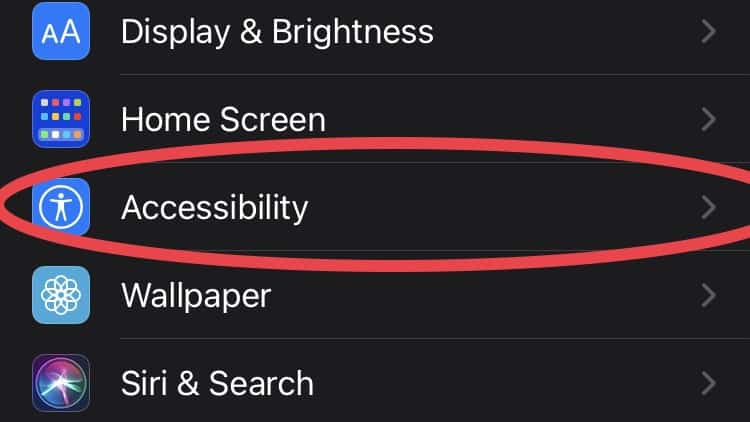
Tap Accessibility
Step 5: Scroll down to the “Hearing” section and tap “Hearing Devices.”
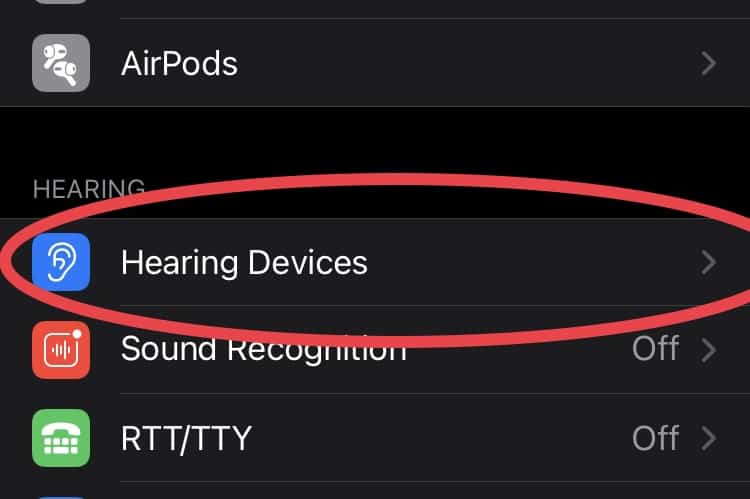
Select “Hearing Devices”
Step 6: Close the battery doors on your hearing aid.
Step 7: On the “Hearing Devices” screen, you’ll see the word “Searching” next to a spinning wheel, which indicates that your phone is searching for compatible hearing aids. When your device’s name appears on the screen, tap on the name.
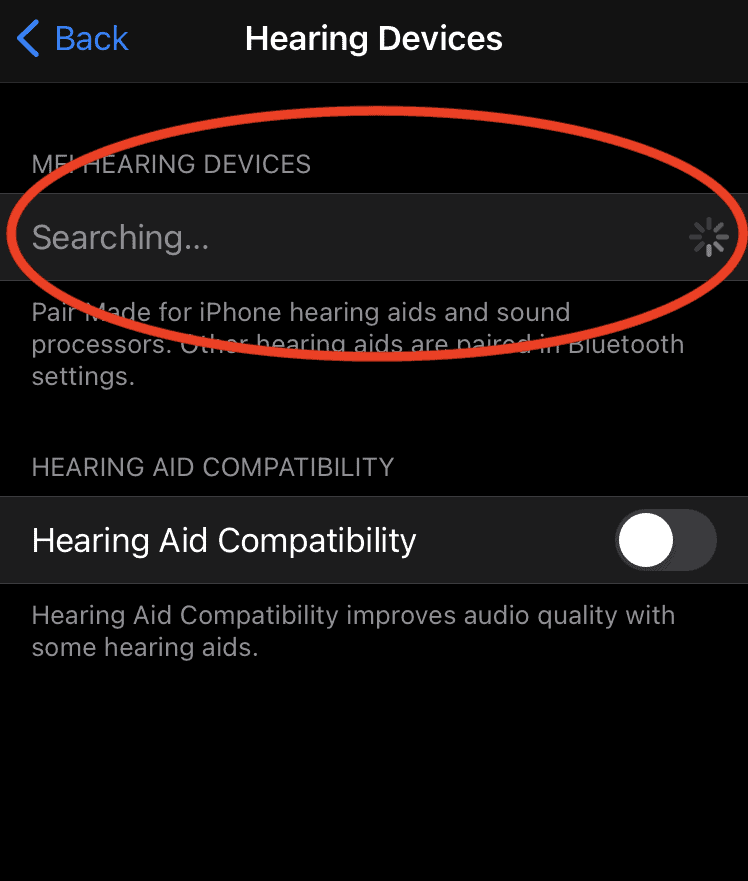
Searching for MFi devices
Step 8: Tap “Pair” when prompted with a pairing request and be prepared to wait up to a minute.
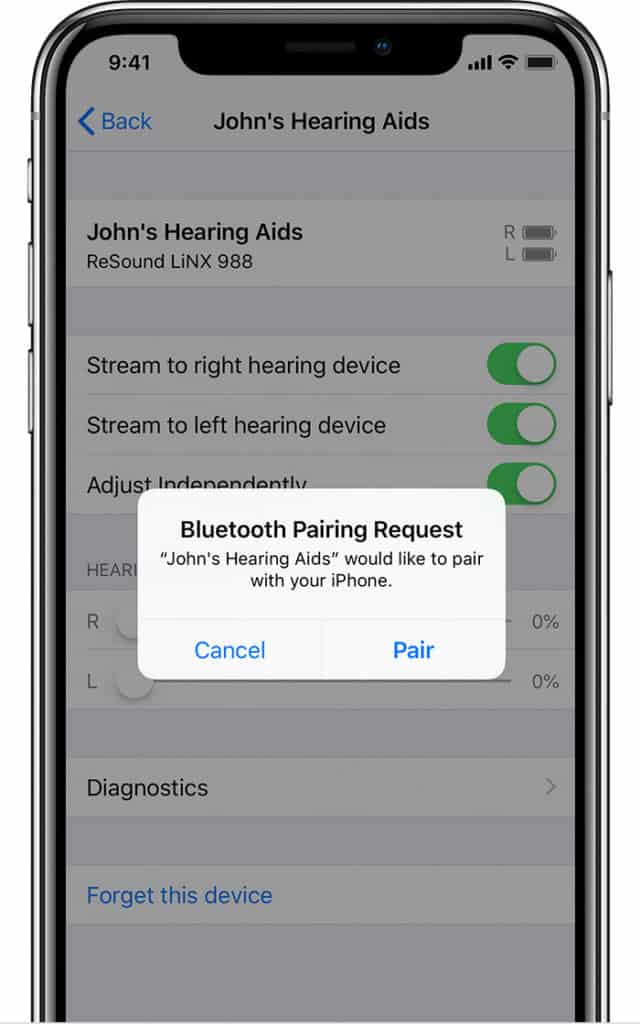
Source: Apple Support
You should be able to use your hearing aid when it appears under “MFi Hearing Devices” with a checkmark. If you turn your hearing aid off, it will disconnect from your device. When you turn it on again, you will need to reconnect it by opening and closing the battery doors.
Controlling Your MFi Hearing Devices with an iPhone
Once you have paired your hearing aid, you can control it with your iPhone. Go back to the “Hearing Devices” page in your settings, using the same steps as above; tap the “Settings” icon on your home screen, select “Accessibility,” and finally tap “Hearing Devices.” From here, you can:
- Adjust the volume
- Check battery life on your devices
- Choose an audio preset for optimal sound (such as “restaurant” or “party”)
- Turn on and off Live Listen (uses the phone’s microphone to better hear someone speaking in a noisy room or far away)
- Unpair your hearing aid by clicking the device name
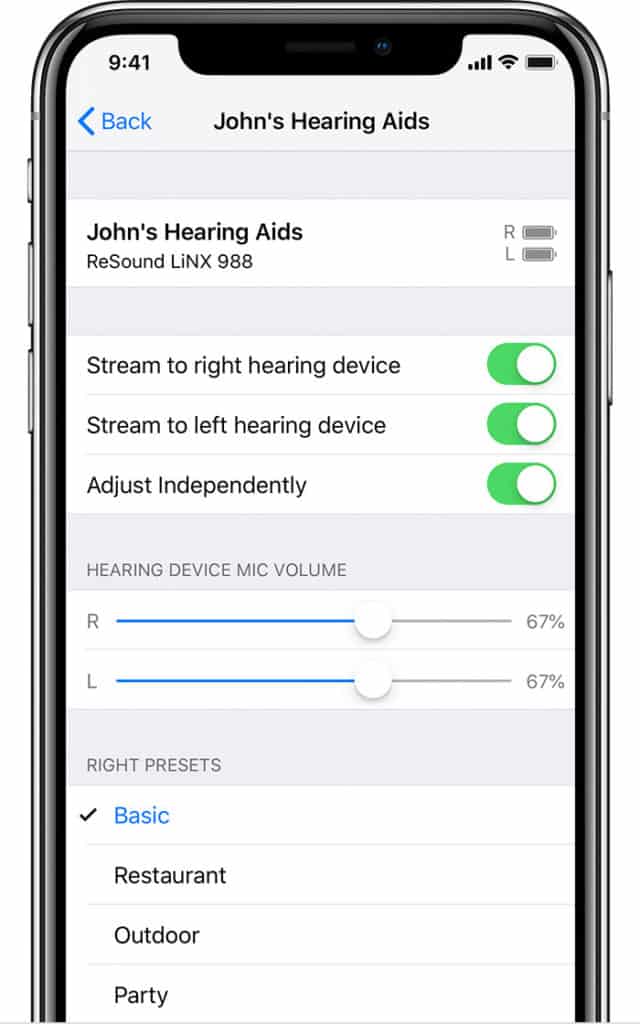
Source: Apple Support
You can also access these features more quickly with the accessibility shortcut, which allows you to change settings straight from the home screen. Here’s how to set this up:
Step 1: Go to your “Settings” from the home screen.
Step 2: Tap “Accessibility.” Then scroll down to the bottom of the page and select “Accessibility Shortcut.”
Step 3: Tap any of the features on the screen that you use most often.
Step 4: When you are ready to access the shortcut, tap the home button three times, or for iPhone X and later models, tap the side button quickly three times. The screen below will pop up automatically, so you can adjust your settings quickly and easily.
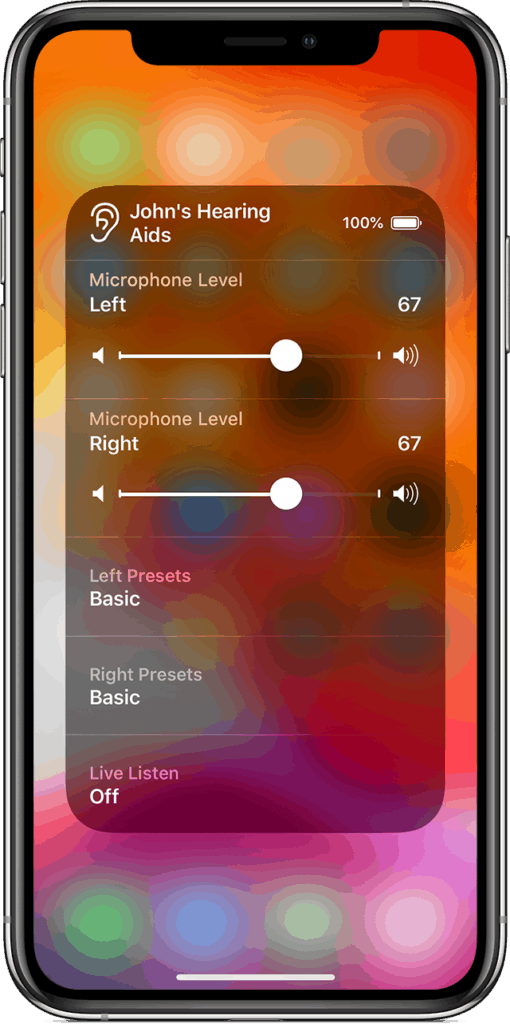
Source: Apple Support
For additional functionality, be sure to download the mobile app for your specific hearing device if one is available.
What to Do if Your Made for iPhone Hearing Aids Won’t Pair with Your iPhone
If you are having difficulty successfully pairing your devices, try these troubleshooting steps.
Make Sure Your Software Is Up to Date
Step 1: Go to your “Settings” from the home screen.
Step 2: Scroll down and tap “General.”
Step 3: Select “Software Update.” Any available updates will appear on this screen.
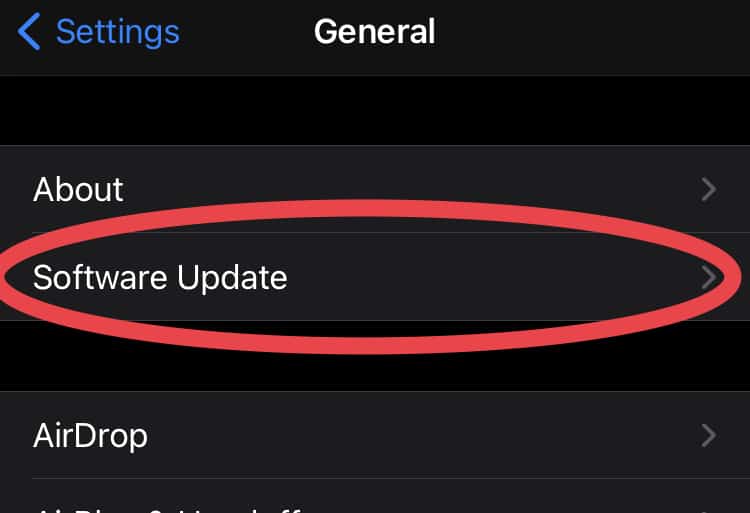
Check for software updates
Check Connectivity
Step 1: Put your phone screen to sleep by tapping the button on the right side or top of your phone, depending on the model.
Step 2: After five seconds, tap the button again.
Step 3: Open the control center by either swiping down from the top right corner of the screen (iPhone X or later) or swiping up from the bottom of the screen (older models).
Step 4: If your device is connected, you will see the name next to “AirDrop.”
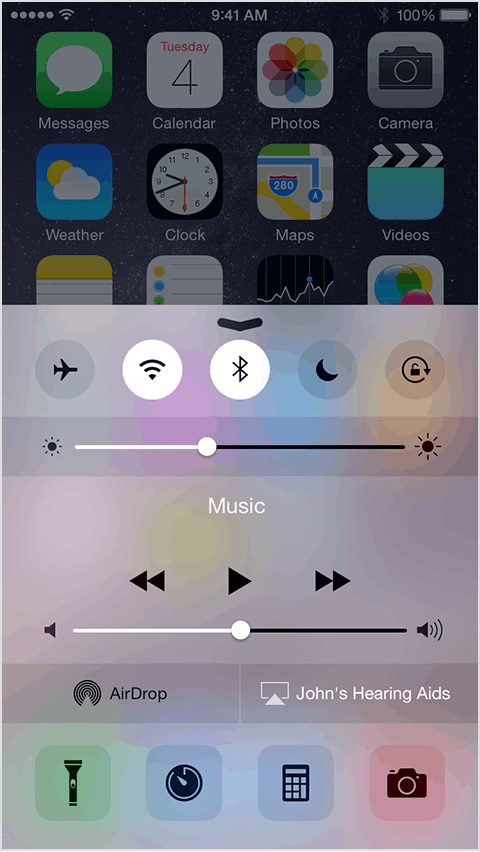
Source: Apple Support
Step 5: If you do not see your device name here, try going to “Settings” and tap “Bluetooth.” Wait on this screen for a few seconds. Then check the control center again.
Did you know you can use AirPods to improve your hearing? Check out the video below to learn how you can connect your AirPods to your iPhone and use them as assisted listening devices.
Frequently Asked Questions About Pairing Hearing Aids to Your iPhone
-
Will pairing with my iPhone drain my hearing aid battery faster?
Yes, connecting your hearing aid via Bluetooth will make the hearing aid’s battery drain faster, which is something to be aware of.
-
What if my hearing aids don’t say Made for iPhone?
You can still pair them with your phone as long as they have Bluetooth connectivity, but you will need a separate streaming device as a communication link. Your hearing aid provider typically sells these devices.
-
What if I have both an iPhone and an iPad?
As long as your devices are connected to the same Wi-Fi network and are logged into the same account, the hearing aid should switch connection as you switch devices, assuming you have paired both of them.
Take Our Free Online Hearing Test
Wondering if you have hearing loss?
Grab your headphones and get an evaluation in minutes.
-
National Institute on Deafness and Other Communication Disorders. (2021). Quick Statistics About Hearing.
-
AARP. (2020). Older Adults Keep Pace on Tech Usage.
-
Apple. (2021). Made for iPhone compatible hearing devices.



